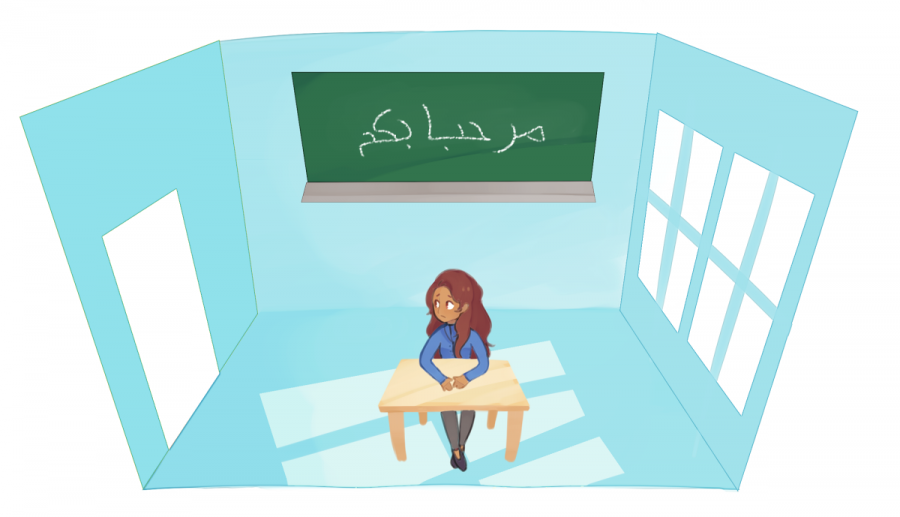As Kelly Lynch traveled through rural Ireland, she communicated with her host family and with rural locals not only in English but in Irish Gaelic as well.
While the Irish do speak English, Lynch, who started in Dublin and made her way through the countryside, may have missed the late night jokes told in pubs had she not understood the native language.
Fortunately, she had found Irish Gaelic in Pitt’s Less Commonly Taught Languages Center last fall and signed on. This fall, she’s the teaching assistant for Irish Gaelic 1.
“It’s very easy to take Spanish or French –– everyone takes those –– but taking Irish or a different, less commonly taught language gives you a sense of uniqueness,” Lynch said. “It gives you a better appreciation for that language as well as that culture.”
Languages other than the standard few offered in public education –– such as Spanish, French and German –– are considered less commonly taught languages.
Though not all students are aware of the LCTL center at Pitt, which is a part of the Linguistics department, Pitt offers more less commonly taught languages than any school in Western Pennsylvania. This includes about 65 classes per semester ranging from Irish Gaelic to Danish to Quechua –– an indigenous language spoken by people located in the Andes in South America.
At the LCTL center, instructors of each language –– with the exception of Quechua –– are native speakers and often create classroom environments that serve as microcosms of the country the language originated in.
In instructor Shukuh Ghaznavi’s Persian class, students walk into a Persian world when they enter the classroom. Ghaznavi immerses her students in Persian culture by requiring them to adhere to cultural norms. When students come to class, they say hello to Ghaznavi in Persian. If they don’t, they run the risk of angering their instructor, which Ghaznavi sees as a learning experience for her students.
“This is the culture. If you come to the class and do not say hello, I get upset,” Ghaznavi said. “If I was not native, that would not be important to me.”
In the roughly fifty years since the Center began, its courses could only be found under the Linguistics code — LING — when students registered for classes, making them difficult for students to find. However, starting this spring, each less commonly taught language will have its own code. That means searching “SWE,” for example, will bring up class offerings in Swedish — all with the intent of making the classes easier for students to find.
Even if increased visibility increases awareness, the language classes will likely stay small. According to Language Program Coordinator Gretchen Aiyangar, the LCTL center offers small classes capped at 20 students, and while intro classes may reach their caps, upper level classes may have only a handful of students or even just one.
The courses typically proceed regardless of low enrollment, which allows Pitt to offer many less commonly taught languages, although the LCTL center often has an issue with attracting the attention of students to their classes.
They combat this by tabling outside the Union, allowing cross-registration with other universities in Pittsburgh, by word of mouth through other programs at Pitt, such as the International Studies program, and by proposing future minor programs and easier access when registering for classes through new codes.
The center offers 10 to 15 different languages per semester. While the center occasionally introduces new languages, they rarely remove languages because they want students to have the opportunity to continue pursuing a language after beginning.
“I keep a list of when people stop in and say, ‘Oh, I’d really like to take this,’” Aiyangar said. “The University Center for International Studies often has some insight into what students who are getting certificates through there might need, too.”
Last spring, the LCTL center started offering courses taught in English on Irish and Turkish culture, and this semester, they started offering a Danish language course.
The professors and students of less commonly taught languages believe the small class sizes are not a drawback but are beneficial to students.
Ezra Stolz, who is taking an upper level Swedish course this semester, said his instructor, Eva Albertsson, explained over email that the students could choose the time the class would meet, since there are so few students in the class.
“The teaching is private tutoring almost. The teacher always knows what each individual student needs,” Albertsson said. “It’s very easy to access what we need to spend more time on, and there’s the opportunity to communicate and have the confidence to do it.”
Stolz wanted to take Swedish because he learned at a young age that his maternal grandmother grew up in Sweden. Stolz, a fifth-year Russian major, plans to move to Sweden after he graduates.
“I started studying Swedish when I was like 12,” Stolz said. “I distinctly remember studying Swedish in the car while my parents and I were on our way to New York.”
Stolz brushed up on his Swedish in personal sessions with Albertsson when he got to Pitt and then tested into a higher level course.
Students are generally unaware of how often they come in contact with less commonly taught languages, according to Swahili instructor Filipo Lubua.
For instance, Lubua asks his students on the first day of class to say one word in Swahili, and, despite the popularity of the Disney movie Lion King, no one responds to Lubua.
“Students know Hakuna Matata and Simba, but they don’t know that that’s Swahili,” Lubua said. “If they did, most students would be interested in taking a language.”
The language courses in the LCTL center usually don’t fulfill requirements other than general education. Though Aiyangar said she hopes one day each of the languages will be offered in the form of a minor, only Arabic and American Sign Language currently have certificate programs, which include literature and culture courses in addition to language courses.
It sometimes pays financially to be a student interested in a less commonly taught language. Steve Sloto, a 2015 Pitt graduate, took four years of Turkish in the LCTL center. The Foreign Language and Area Studies Fellowship essentially paid for two years of Sloto’s education and allowed him to pursue Turkish language and culture classes.
Sloto’s interest in Turkish also sent him abroad through a Fulbright grant, which allowed him to teach English in Turkey for the past year.
Students who take less commonly taught languages may also have the help of their instructors when seeking out career opportunities. Turkish Instructor Ilknur Lider said that because she knows her students’ proficiency and career goals, she makes sure they don’t leave her class without her help in getting jobs, internships or fellowships.
For example, her former student Sloto worked with language technology in a research lab at Carnegie Mellon, helping to develop programs that can decipher languages like Turkish.
“Because you get to know the students’ aspirations and goals, you can always mentor your students into applying for certain things,” Lider said. “Yes, they took this course to fulfill a language requirement, but they can make a connection into realizing their future goals.”



